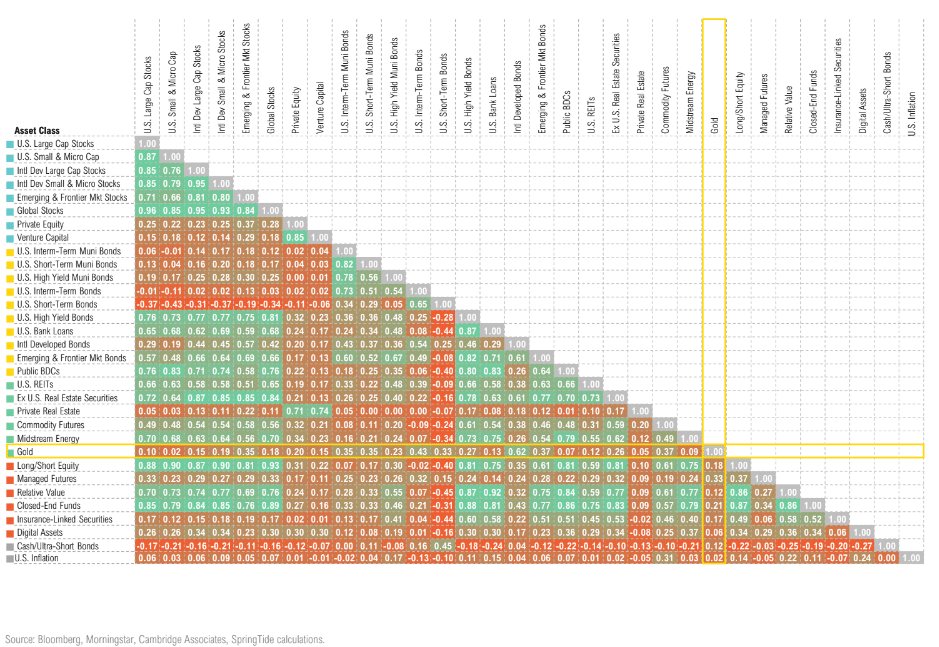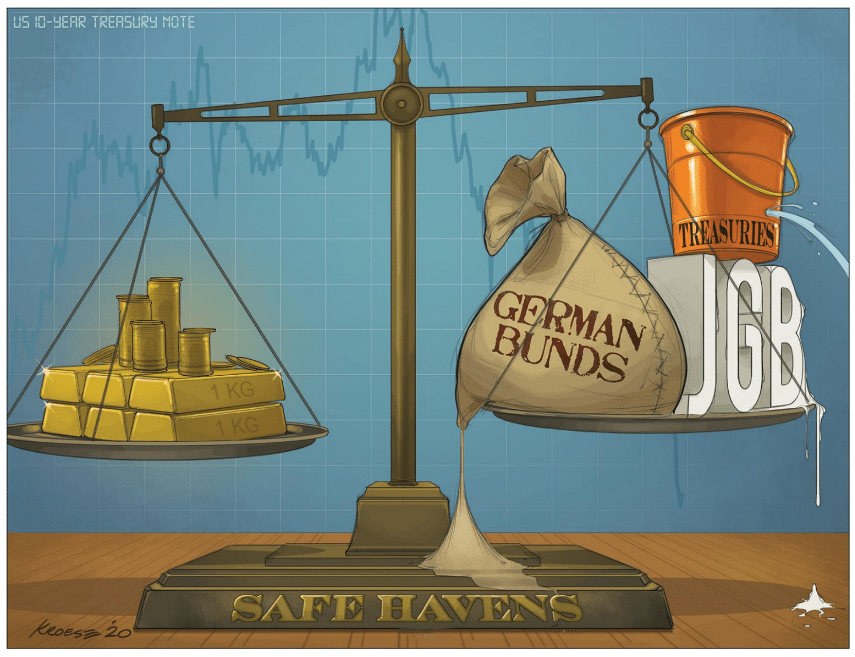
Long-Term Trends
Growth Charts
Gold has trailed stocks, but outpaced bonds for more than 50 years
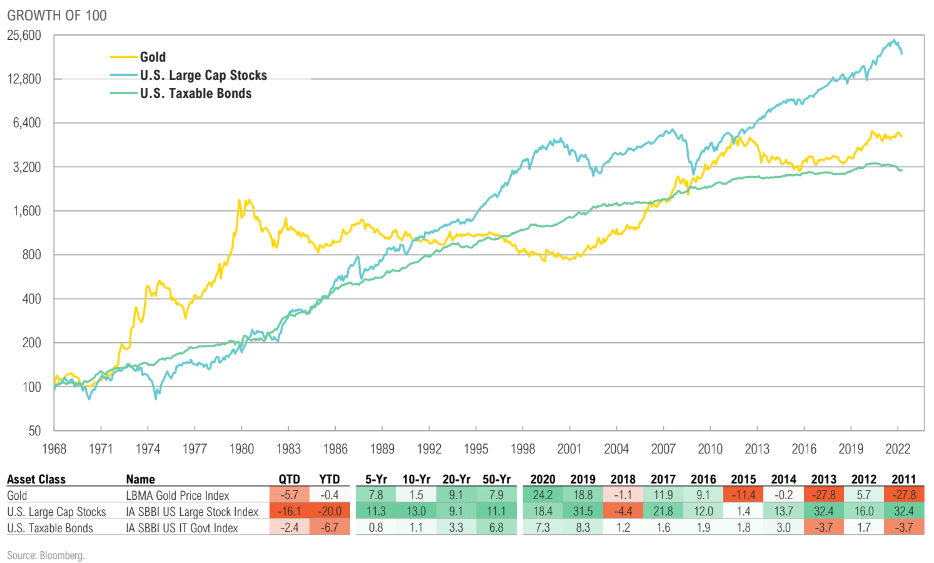
Returns from Key Dates
Longer-term returns for gold are favorable relative to other safe-havens but over the short- term higher yields have increased the relative attractiveness of bonds at the expense of gold
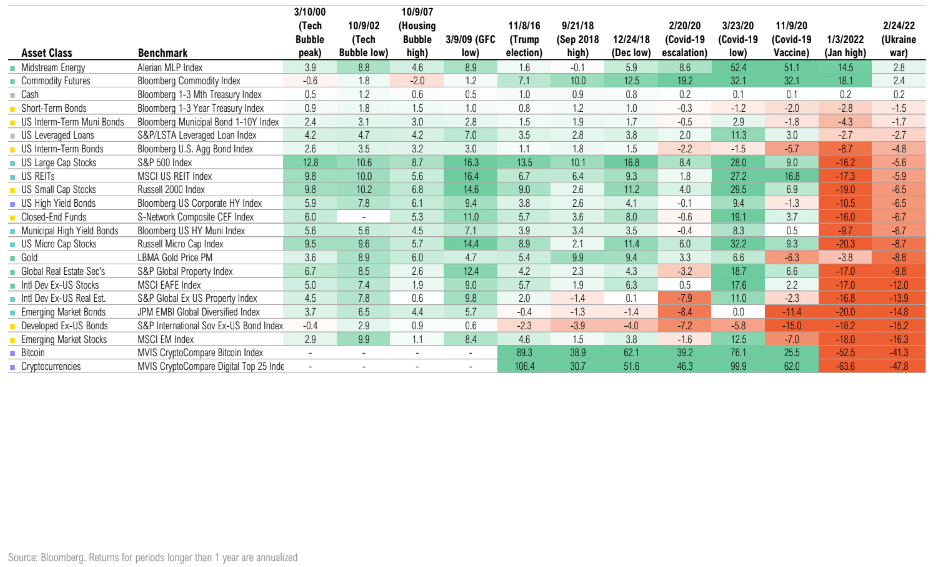
U.S. Stocks-to-Gold Ratio
U.S. large cap stocks-to-gold ratio for over 100 years

Priced in gold, stocks are yet to regain Tech Bubble highs
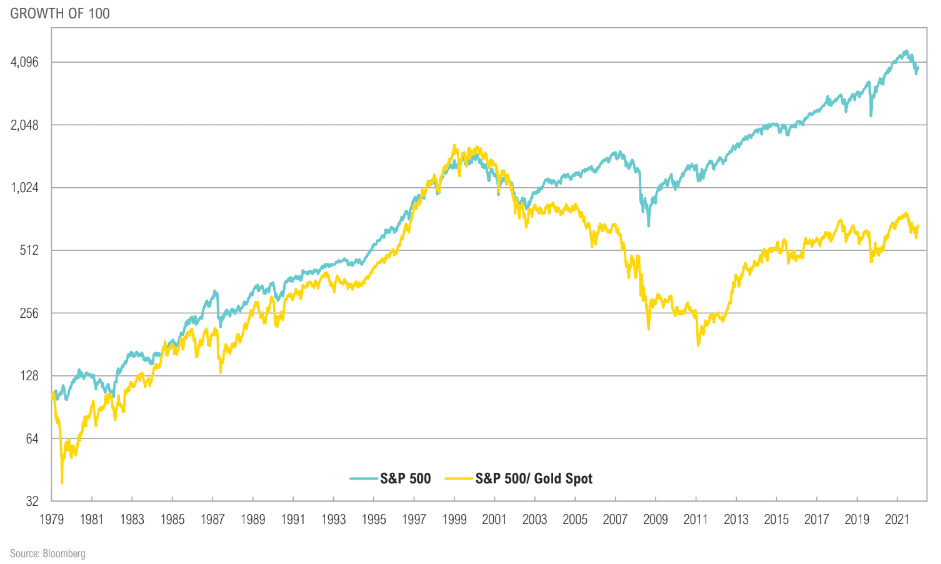
Assuming the price of gold tracks global monetary base per capita over the long term implies expected returns over 6%
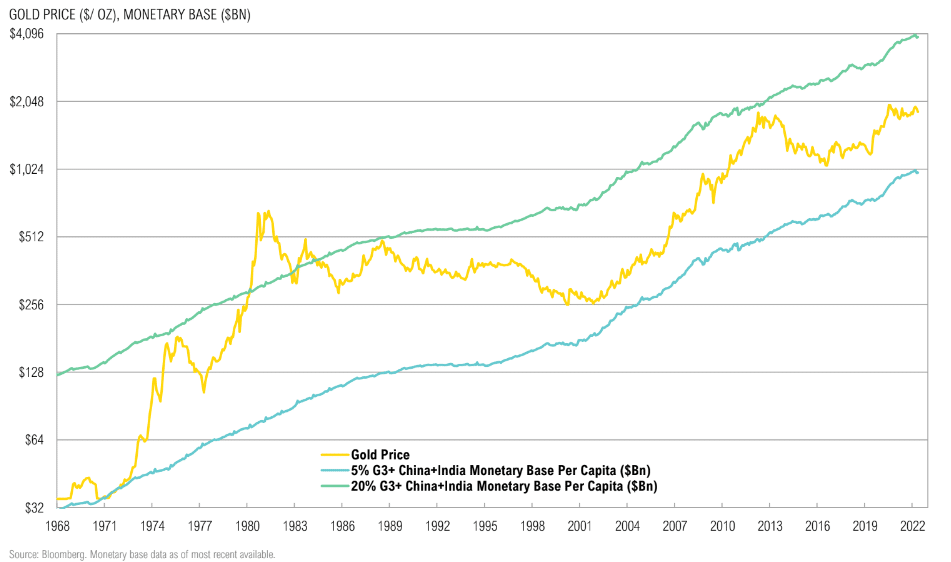
Market Trends
Real yields, which historically have had a strong inverse correlation with the price of gold, are at the lowest level of the last 40 years…

…and if the Fed is going to keep real yields deeply negative with a dovish leaning in coming quarters, real yields could head higher
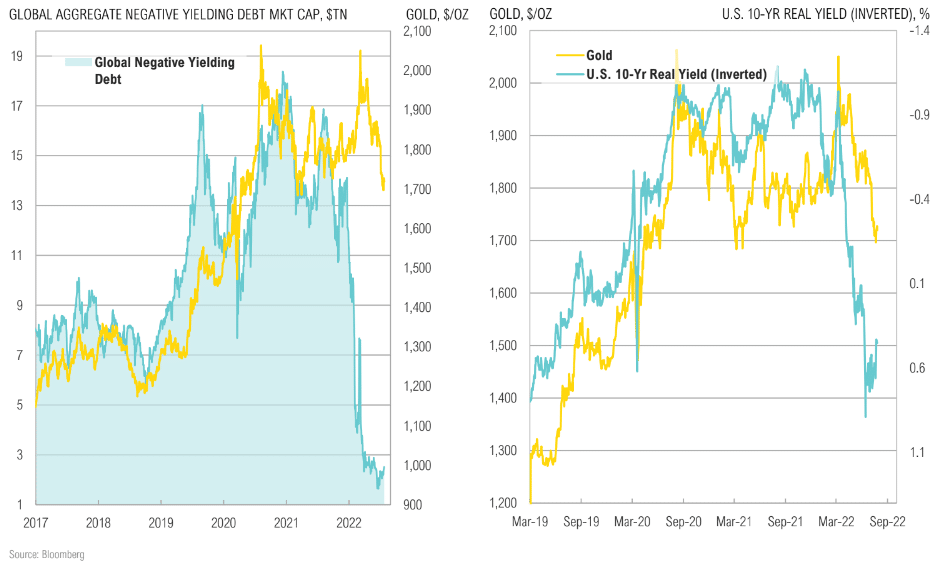
Despite the intra-year volatility, longer-term returns for gold have been surprisingly consistent across multiple currencies
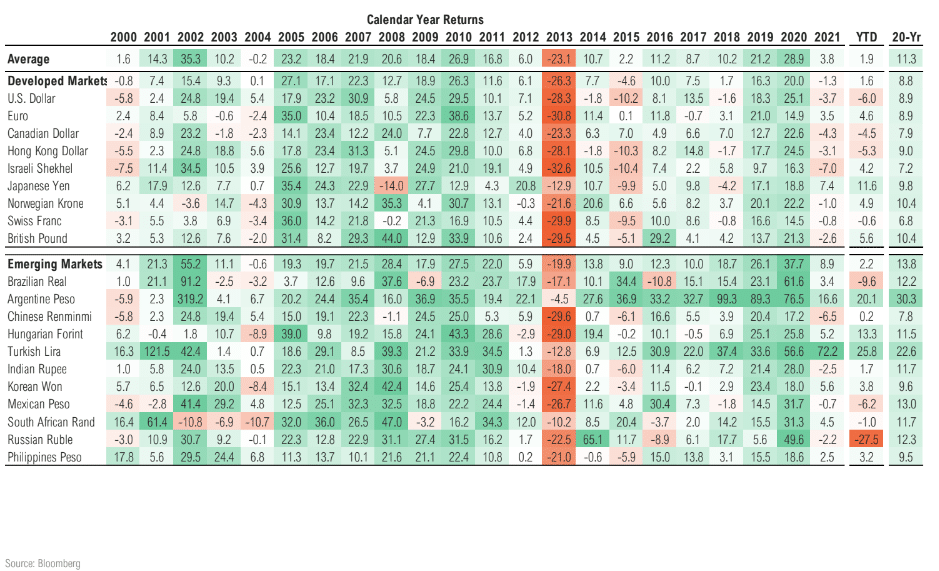
Longer-term trend appears intact despite drawdowns across several major currencies; drawdown in USD terms more severe given relative currency strength
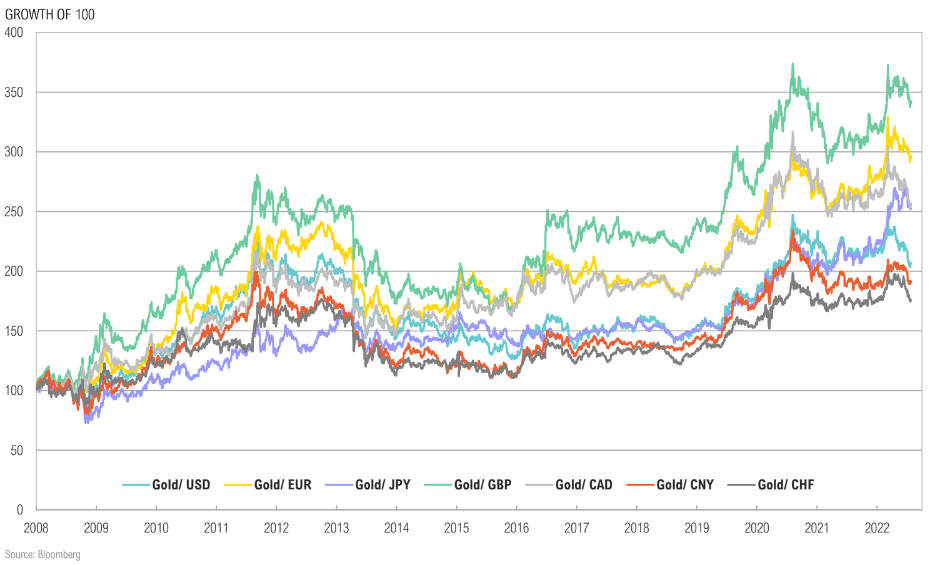
Gold looks cheap relative to U.S. stocks and doesn’t look overbought/stretched relative to treasuries
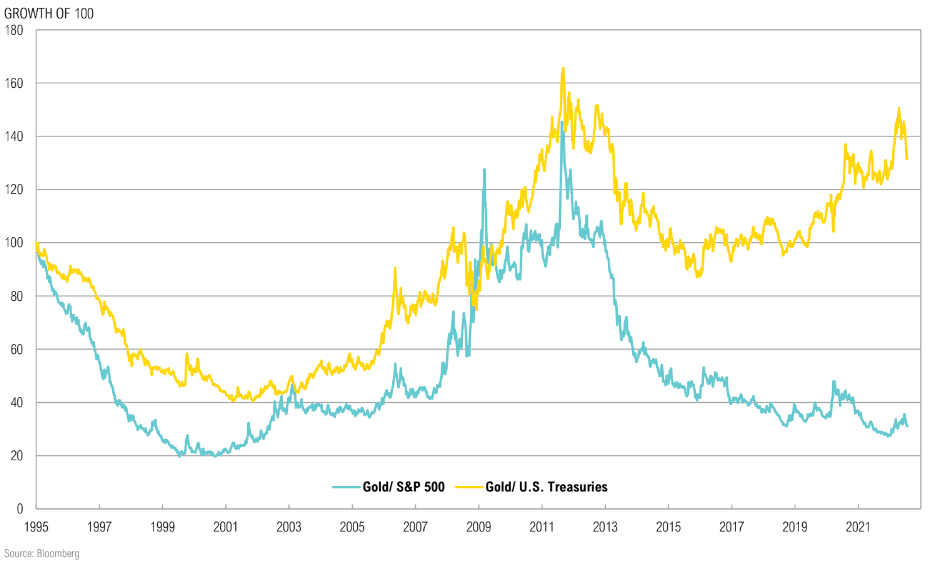
Miners vs Physical
Gold miners now look very cheap relative to the physical on the surface, but operating costs are a concern given energy and labor backdrop
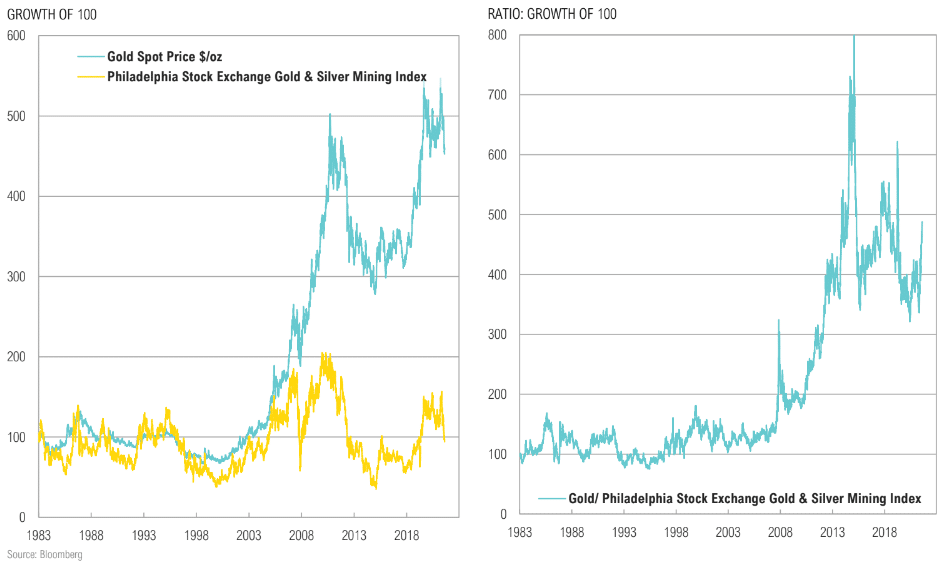
Spec positioning in gold futures suggests markets are nearing capitulation, which has generally resulted in above-average forward returns
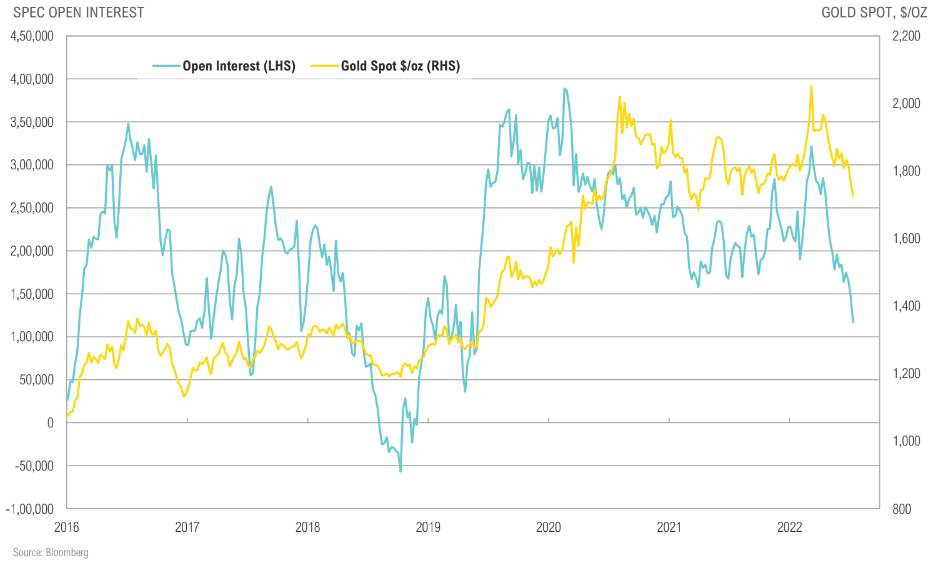
Silver sentiment also trending lower as prices make lower highs and lower lows
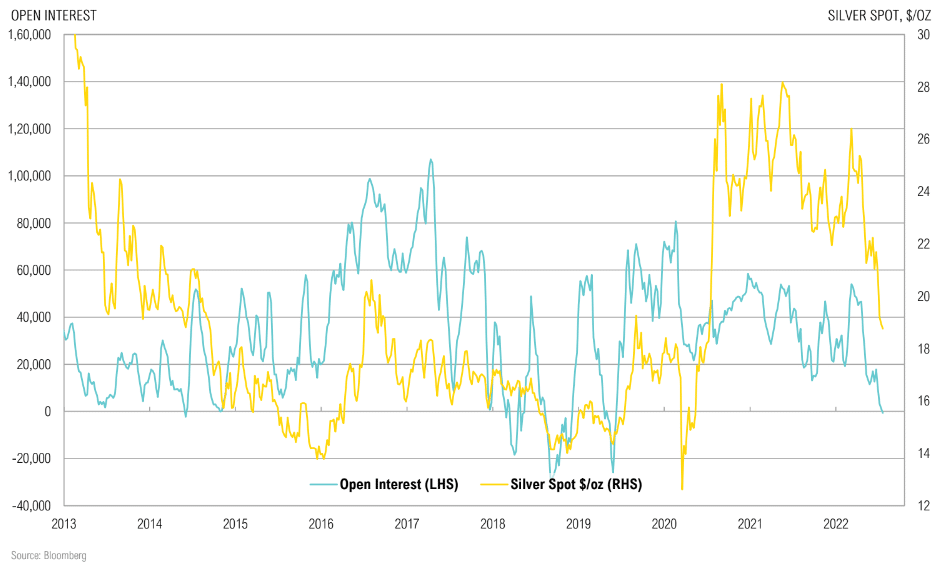
High demand for physical hints at increased perceived systemic risk as Fed is trapped and markets may need to accept negative real rates or recession
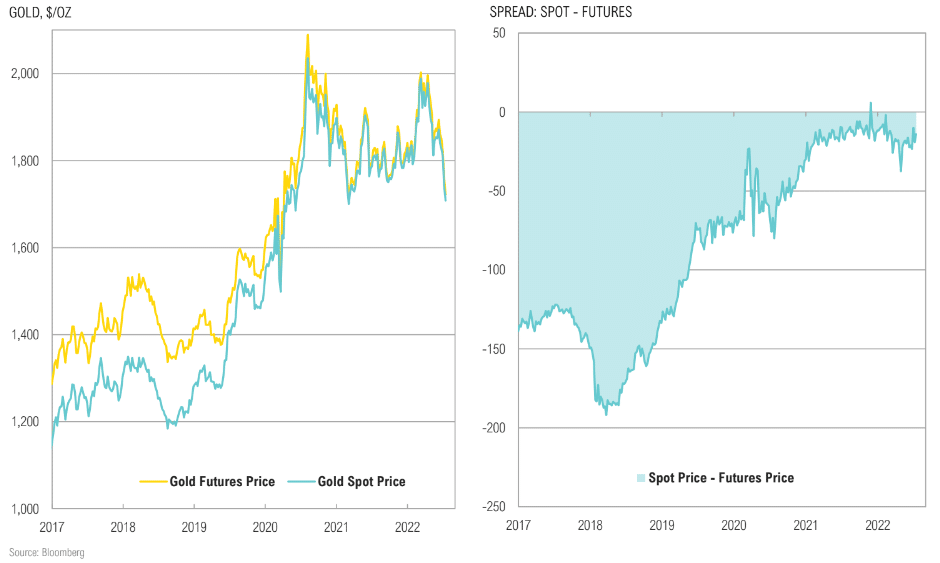
Gold-to-Silver Ratio
Silver is attractively priced relative to gold
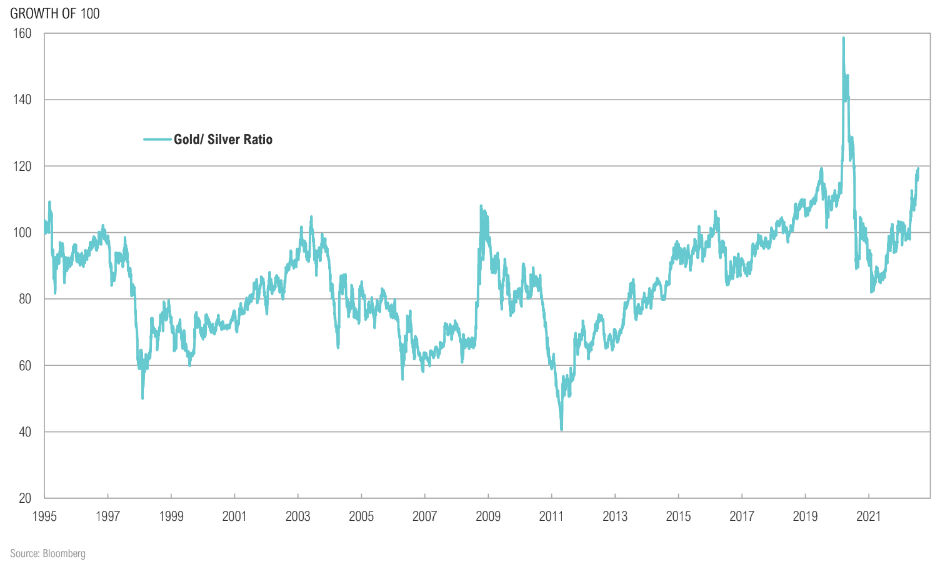
Historical Corrections
Gold’s correction following the covid rebound was run-of-the-mill relative to historical bull market declines
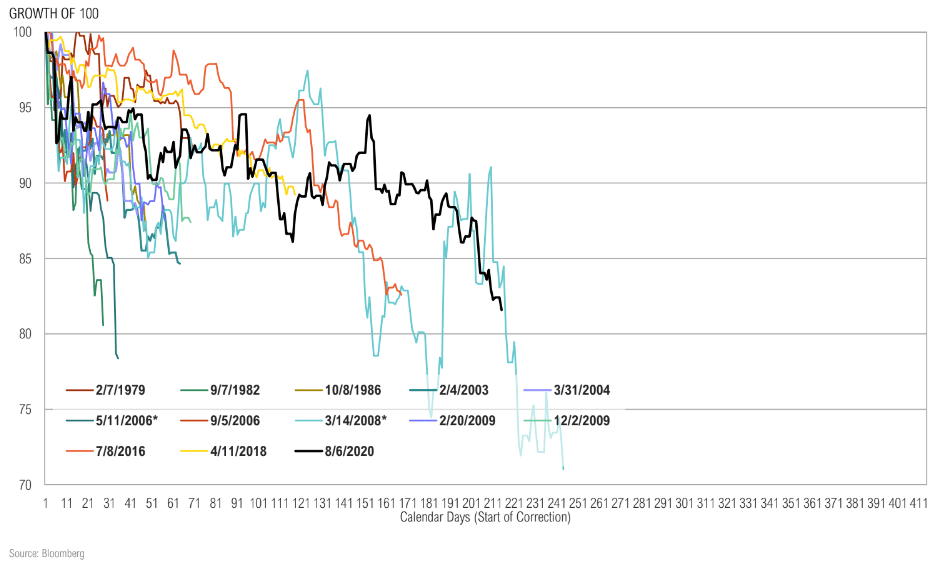
Stock Market Declines
Gold has had mixed, but generally positive, returns during stock market declines; so far, gold has failed to act as a hedge in the current environment
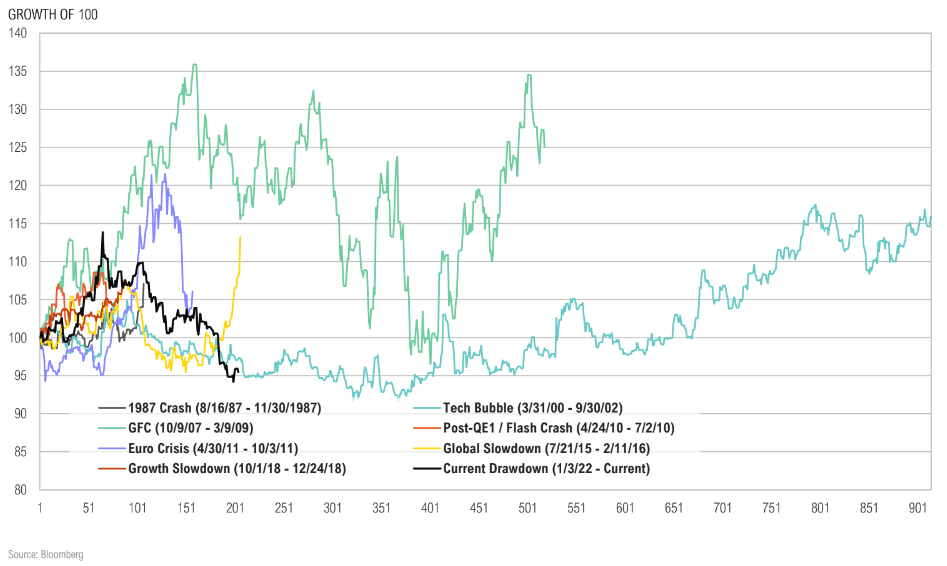
Significant Market Events
Gold, however, has mixed historical returns during other significant market events
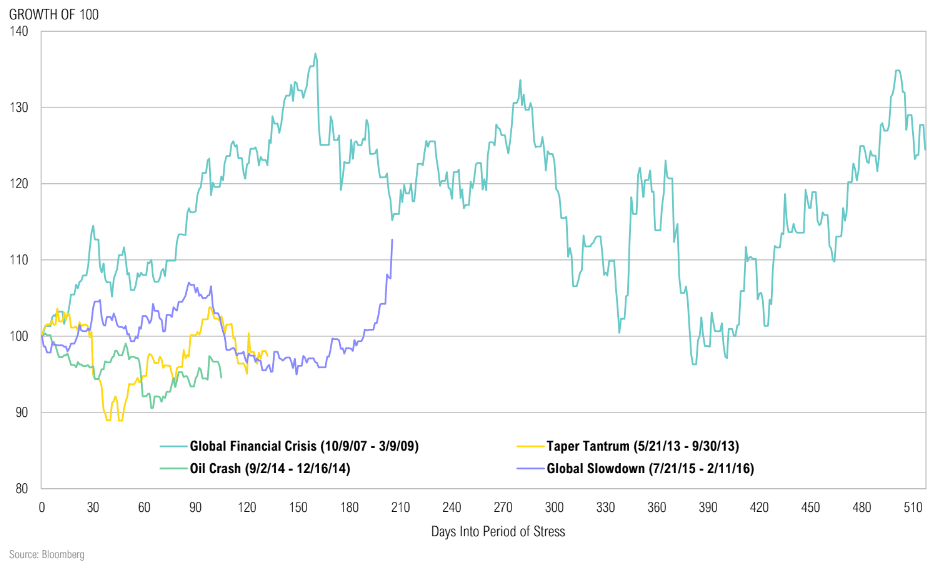
Gold Returns During High Inflation
Gold has a decent track record as an inflation hedge, but it is by no means a portfolio panacea during these episodes
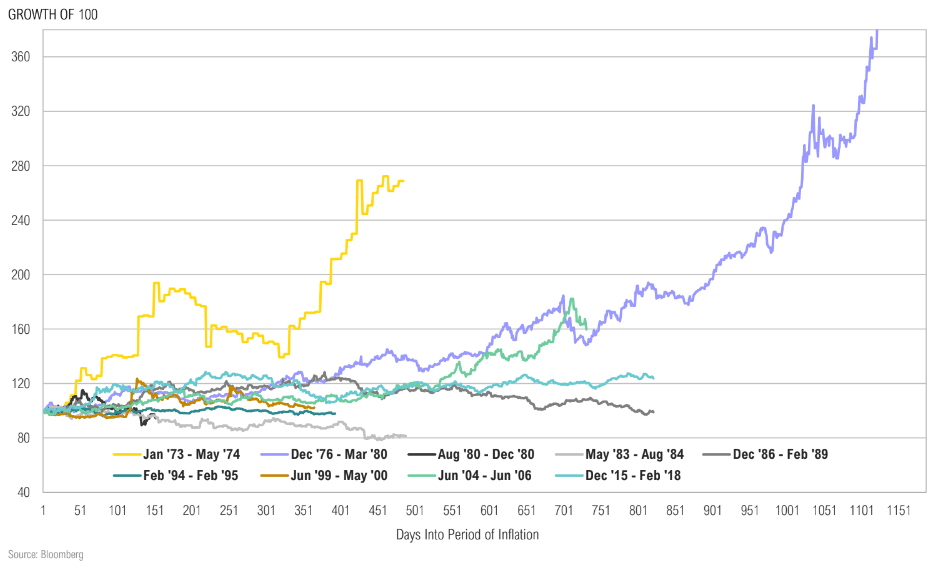
Case Study 1
Stock Market Declines
Case study 1: gold returns during stock market declines
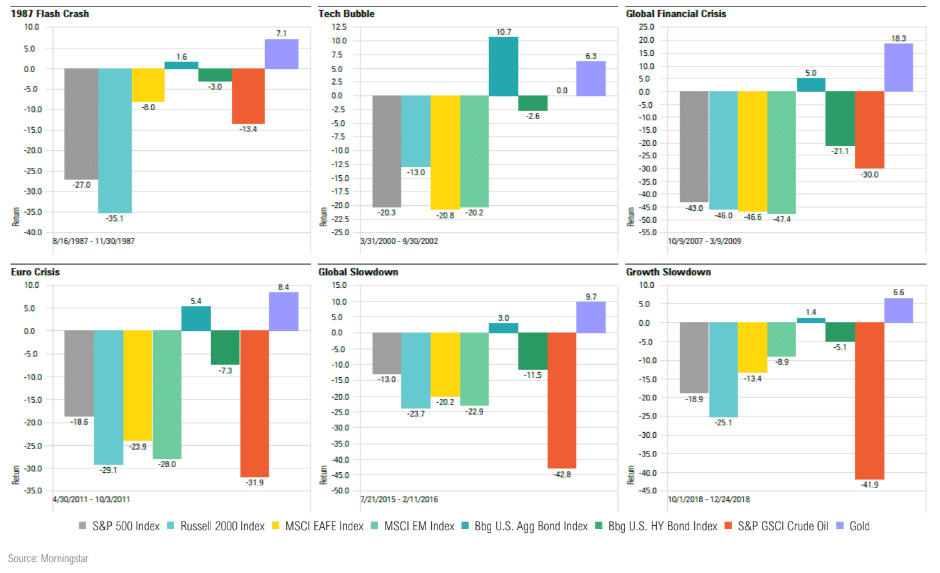
Case Study 2
Significant Market Events
Case study 2: gold returns during significant market events
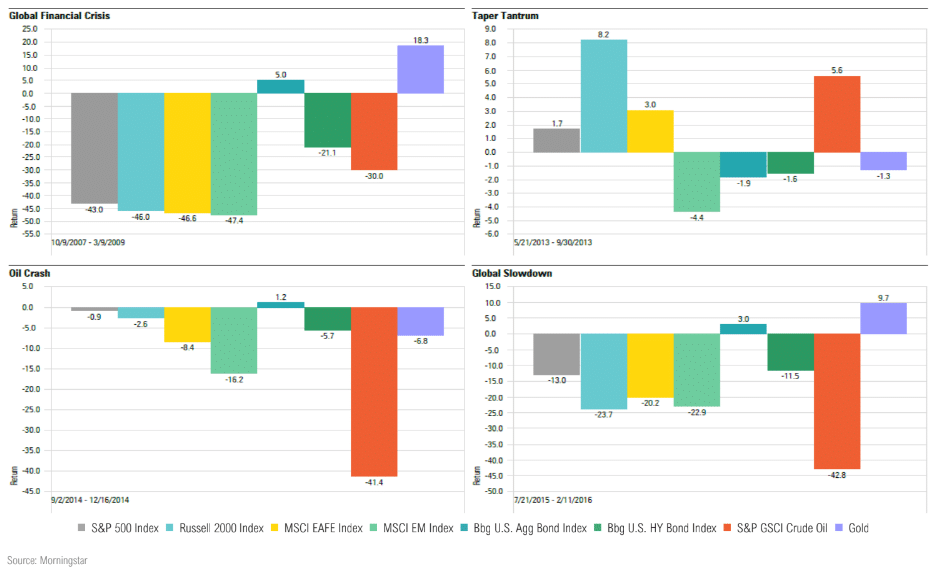
Case Study 3
Rising Inflation
Case study 3: gold returns during periods of rising inflation
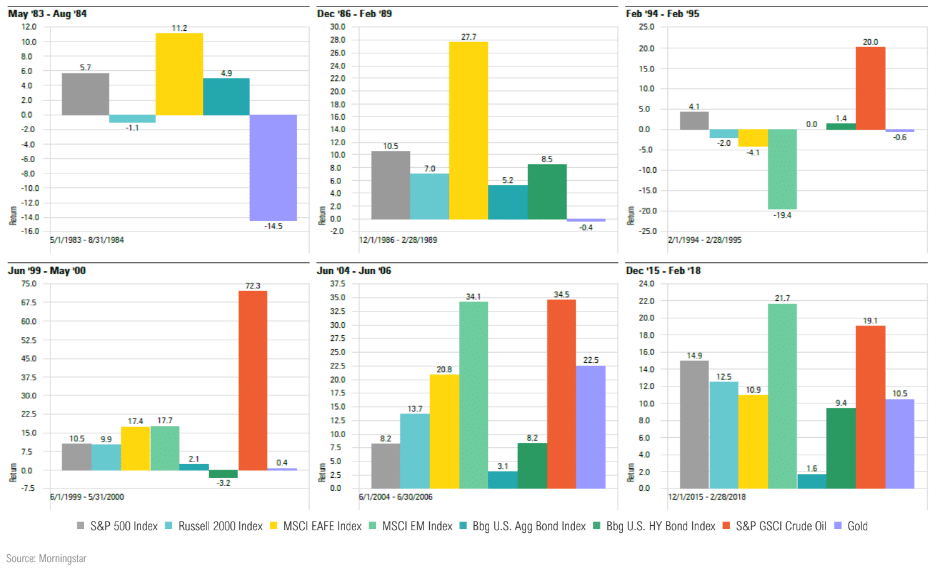
Appendix
Rolling Correlations
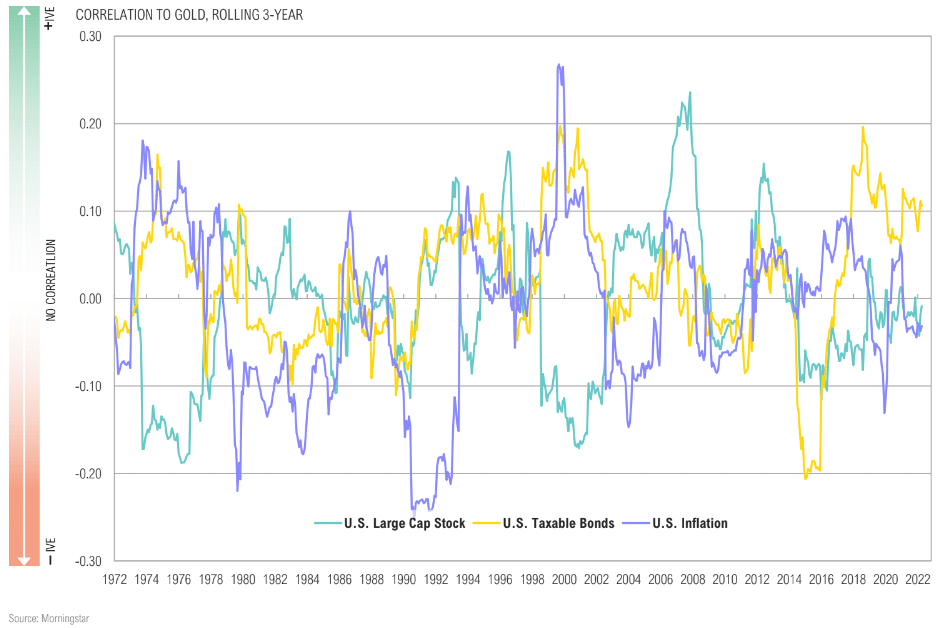
Correlation Matrix
